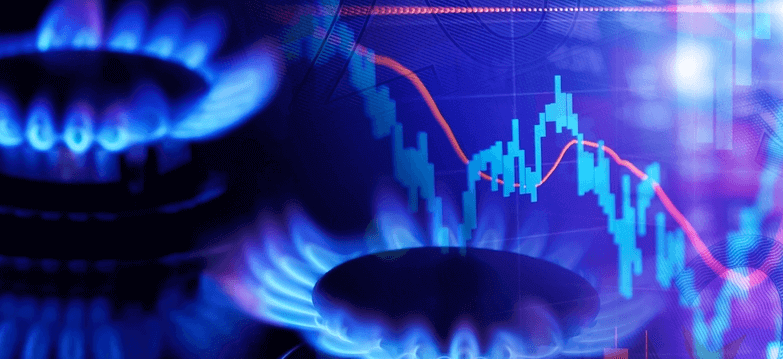In this Canstar Blue guide, we take a look at the average natural gas bills across Australia. We look at data based on state or territory, age group and household size to help you compare.
Even the tightest household budget is no match for an unexpected gas bill. Unfortunately, gas bills are just one more expense many Aussies don’t see coming, which can lead to bill-payers questioning the amount due. And while it may feel natural to query a bill, chances are it’s accurate.
In this guide, we look at the average gas bills across Australia so you can compare them against your costs. We’ll give you an elaborate breakdown from most states or territories, plus highlight average gas bills per household size and age group based on our research data. So, if your home just wouldn’t feel like a home without gas cooking or heating and you’re eager to see what your neighbours are paying, then look no further.
Get better than average – compare plans here
If you want to get ahead of the game and compare plans in your area, jump straight into our natural gas comparison tool.
Average gas bill in Australia
A Canstar Blue survey conducted in December 2024 found the average quarterly gas bill in Australia to be $170. Across the country, 52% of survey respondents believed they get a good deal on gas, while only 18% of bill-payers have switched gas suppliers in the last two years. Despite this low number, 60% said it proved to be a good financial decision to switch.
The following table shows average quarterly gas bills across Australia, based on a Canstar Blue survey of more than 3,200 households. The costs reported include households of all sizes.
| State/territory | Average quarterly gas bill |
| Western Australia | $110 |
| Queensland | $170 |
| New South Wales | $176 |
| Australian Capital Territory | $185 |
| South Australia | $223 |
| Victoria | $180 |
Source: Canstar Blue research, December 2024. Northern Territory excluded due to insufficient data.
As you can see above, South Australia reported the highest average gas bills, followed by the Australian Capital Territory and Victoria. Households in Western Australia had the cheapest quarterly bills, with Queensland second-cheapest. Keep reading for a thorough analysis of average gas bills across the capital cities in some of these states.
Average gas bill in Sydney
For households in New South Wales, Canstar Blue research found the average quarterly gas bill to be $176.
Below is a list of some of the cheapest natural gas plans available on the Jemena Gas Network for households in Sydney. Don’t miss out on a cheaper gas deal, compare now.
Compare gas plans in Sydney
Here are some of the cheapest gas deals on our database for NSW. These estimated annual costs are based on the Jemena Gas Network in Sydney and yearly gas usage of 18,542MJ, but prices will vary depending on your own circumstances. We show one product per retailer, listed in order of lowest estimated cost. These are products from referral partners†. Our database may not cover all deals in your area, and please check retailer websites for up to date information.
Average gas bill in Melbourne
In Victoria, the average household quarterly gas bill was $180.
Below is a list of some of the cheapest natural gas plans available on the Australian Gas Network for households in Melbourne. Compare your current gas plan with the cheapest on the market.
Compare gas plans in Melbourne
Here are some of the cheapest gas deals on our database for VIC. These estimated annual costs are based on the Australian Gas Network in Melbourne and yearly gas usage of 29,830MJ, but prices will vary depending on your circumstances. We show one product per retailer, listed in order of lowest estimated cost. These are products from referral partners†. Our database may not cover all deals in your area, and please check retailer websites for up to date information.
Average gas bill in Brisbane
The average quarterly household gas bill in Queensland was $170. To see what prices are like in the market at the moment, below is a list of some of the cheapest natural gas plans available on the Australian Gas Network in Brisbane.
Compare gas plans in Brisbane
Here are some of the cheapest gas deals on our database for QLD. These estimated annual costs are based on the Australian Gas Network in Brisbane and yearly gas usage of 6,842MJ, but prices will vary depending on your circumstances. We show one product per retailer, listed in order of lowest estimated cost. These are products from referral partners†. Our database may not cover all deals in your area, and please check retailer websites for up to date information.
Average gas bill in Adelaide
The average quarterly household gas bill in South Australia was $223. If you think you could be paying too much for gas, compare your current plan with some of the cheapest natural gas plans on the Australian Gas Network in Adelaide below.
Compare gas plans in Adelaide
Here are some of the cheapest gas deals on our database for SA. These estimated annual costs are based on the Australian Gas Network in Adelaide and yearly gas usage of 11,875MJ, but prices will vary depending on your circumstances. We show one product per retailer, listed in order of lowest estimated cost. These are products from referral partners†. Our database may not cover all deals in your area, and please check retailer websites for up to date information.
Average gas bill in Perth
Bill-payers in Western Australia pay an average of $110 on natural gas per quarter, which is the lowest across the nation. That being said, if you are a Perth household that uses gas and you can’t remember the last time you compared plans, you could be missing out on savings. Below are some of the cheapest natural gas plans available on the ATCO Network in Perth.
Compare gas plans in Perth
Here are some of the cheapest gas deals on our database for WA. These estimated annual costs are based on the ATCO Network in Perth and yearly gas usage of 7,672 (units), but prices may vary depending on your circumstances. We show one product per retailer, listed in order of lowest estimated cost. This table contains products from referral partners†. Our database may not cover all deals in your area, and please check retailer websites for up to date information.
Average gas bill based on household size
As the above-average gas costs from our research are based on households of all shapes and sizes, let’s dive further into the data to see how these utility bills look based on household size. The following table shows the average gas bill by household size across Australia.
| Household size | Average quarterly gas bill |
| 1 person | $149 |
| 2 people | $188 |
| 3 people | $220 |
| 4 people | $251 |
| 5 or more people | $262 |
Source: Canstar Blue research, December 2024.
This table follows an intuitive path, with average gas bills increasing as the number of residents does. The average gas bill for a 1-person household was found to be the cheapest at $149 a quarter. The average gas bill for a 2-person household crept down to $188 per quarter, while 3-person and 4-person households recorded an average of $220 and $251 for quarterly bills respectively. The average gas bill for a 5-person household or more was recorded at $262 a quarter.
Average gas bill based on age group
You’ve now seen the average costs by state, capital city and household size – but how does your age impact the amount you’ll be charged for gas in Australia? We’ve collated our data to show the average gas bills by age group at a national level.
| Age group | Average quarterly gas bill |
| 18 to 29 years | $204 |
| 30 to 39 years | $214 |
| 40 to 49 years | $221 |
| 50 to 59 years | $218 |
| 60 to 69 years | $195 |
| 70 years and over | $157 |
Source: Canstar Blue research, December 2024.
From the age group 40 to 49 years, there’s a trend of gas bills decreasing the older the customer is. This may be the result of customers being eligible for certain energy rebates or concessions, or gas consumption habits differing between age groups.
What impacts average gas bills?
Natural gas is fairly similar to electricity in that many factors contribute to your overall costs. Before choosing a gas plan, it’s important to think about which features are most important to you. Here’s what you should consider:
- Usage charges: some gas suppliers have set rates for all gas usage, while others charge gas usage in ‘blocks’, meaning prices will change depending on how much gas your household consumes.
- Supply charges: gas supply charges refer to the underlying costs of supplying gas to your home via the gas mains network. Supply charges are generally the fixed price component of a gas bill.
- Hidden fees: some gas suppliers may tuck fees away in the fine print, such as a connection fee, credit card surcharge, late payment fee, or a paper billing fee. This is why reading the details of your gas plan is important.
- Location: geography plays a major part in the price of natural gas. Customers should consider the difference in supply and running costs, especially if they live in a regional area or have lower gas usage needs.
- Incentives: whether it’s discounts or a rewards program, incentives are a great way for providers to compete for your business. It might even be a larger discount for bundling utilities with the same provider and capitalising on dual fuel providers.
You might also be interested in:
Can I get a better-than-average gas deal?
This will ultimately come down to your personal circumstances, but gas prices can change quite frequently, meaning there are always new deals available.
If you haven’t checked which plan you are on in the last 12 months, it will likely mean you’re not on the most competitive plan. To get a better-than-average gas deal, you’ll need to keep an eye on gas prices and be willing to switch if a better deal comes your way. You can learn more by clicking the link below.
Original reporting by Kelseigh Wrigley
Image Source: marketlan/Shutterstock



Share this article